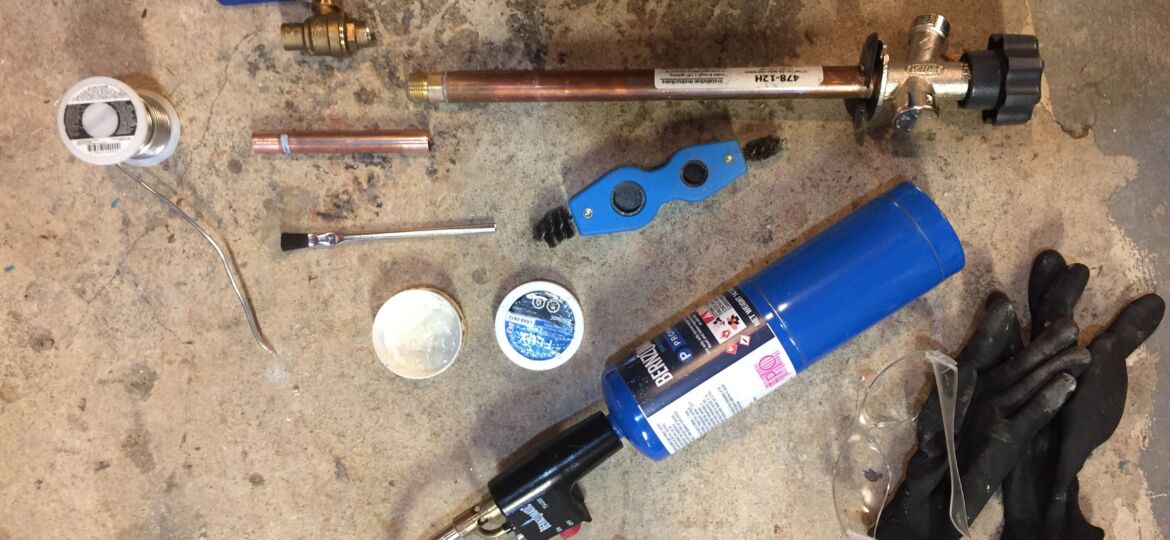
Replacing a hose bib should be—should be—easy. Often it is. Hurl in the old house wild card, however, and there can be more than just soldering copper pipe and patting yourself on the back. If you’re up to the DIY challenge, check it out. Maybe save yourself a little pain in the…
…As I was saying, this should be an easy job. And in a reasonably newer home, which I rarely get to work on, it is. You’ll see those steps here. And a few more.
If you should be lucky enough to have an old house—one where old work is piled on top of less old work work on top of thoughtless work and all mashed into a ridiculously tiny space—you might find a few helpful hints here to replace your faucet with a frost-free sillcock.

The obstructions and thoughtless old work pile up fast in old house fixes. Between the jungle of electric, coaxial cable (co-ax), internet boxes, and plumbing (and this is only half of it) the original shut-off doesn’t function with a newly drywalled ceiling.
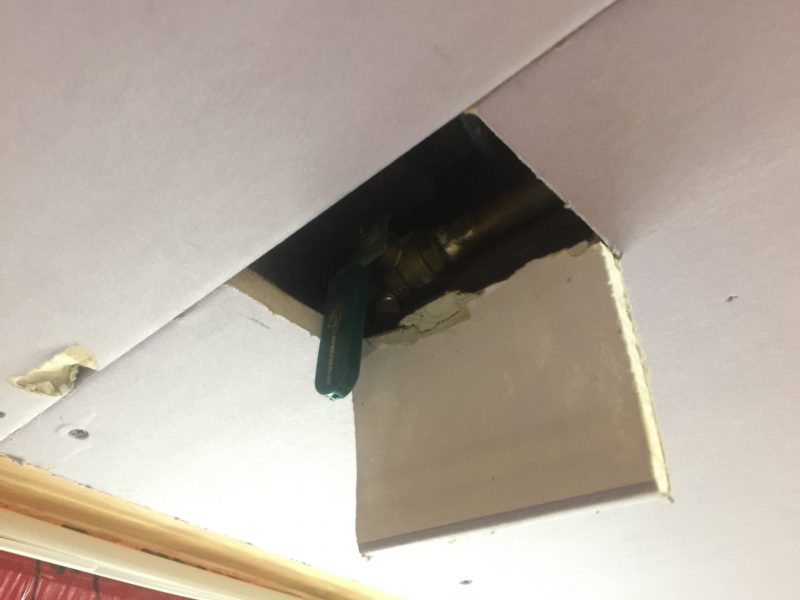
Because this hose bib repair is tied into an ongoing remodel it’s not just plug-and-play. To work around everything, I have to tap into a bunch of different skills and tools. And most importantly: Think through the ramifications of what’ll happen when this is a finished space.
The lesson for me here is that any time I get into plumbing—not my strong suit—I make sure I have as much time as possible and have planned as much as I can—both for my convenience and sanity, but also because I have to shut the water off to the whole house. That effects other people.

Climb the decision tree with me, will you?
After opening up the ceiling and considering I’d need an access hatch in the finished room, I decided it’d be better re-route everything. So, I drilled out the joists—1-inch holes no closer than 2-inches from the bottom of the joist. The stud on the wall is the beginning of the utility closet where I can have unfettered access to the shut-off while hiding it and not having to build an access hatch.
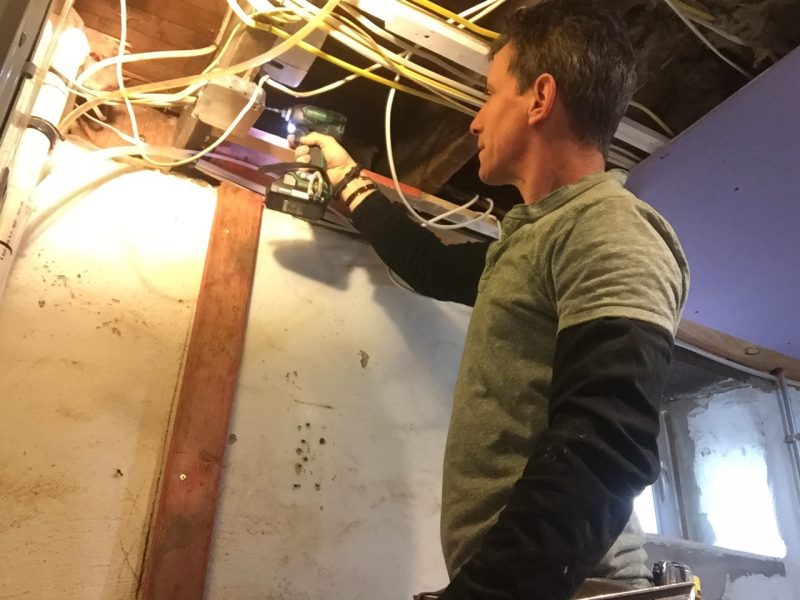
This is where I always stress that a plan matters. Life is a bumpy road sometimes. If you’re lucky, you’ll have an in-line shut-off somewhere downstream from the main water supply to the house. If not, you have to shut all the water off for as long as the job takes you to complete. That means toilets can only be flushed once. And you’d better make the coffee ahead of time! In other words, it effects other people.
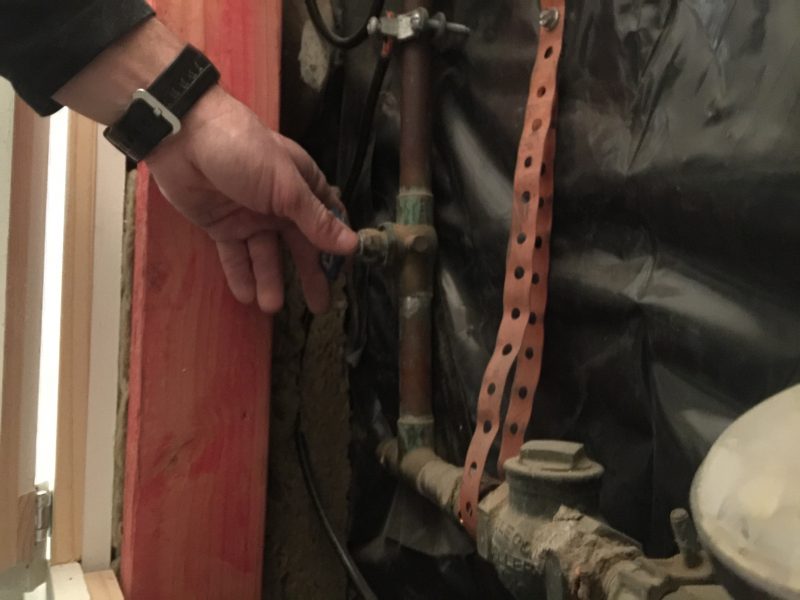
After shutting off the water, open a faucet or two upstairs. This is like taking your thumb off the top of the drinking straw; it lets water drain. And where will it drain? Wherever you cut the pipe, which we do next. Be prepared to let it drain on the floor or to catch it in a bucket.
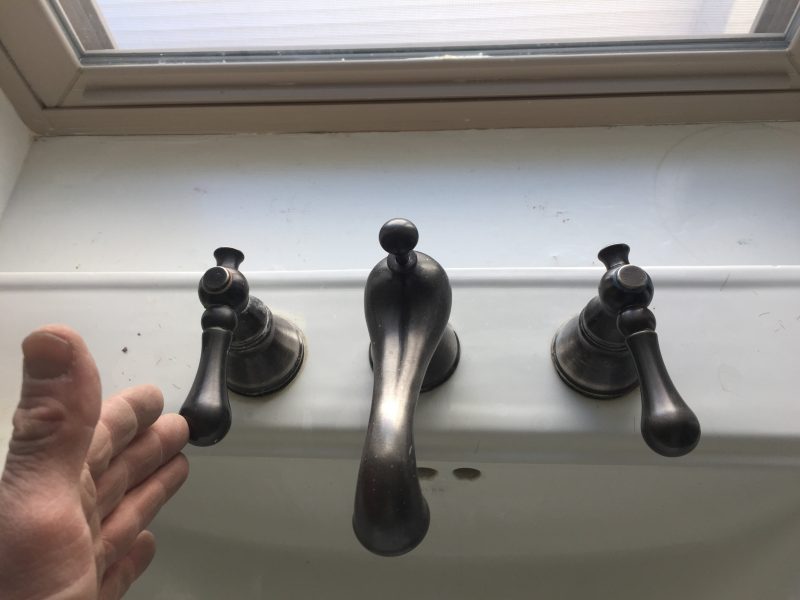
I cut the pipe just a few inches upstream of the existing shut-off. I’m glad I never threw away the hacksaw I have not used since Lincoln was President. It was the best tool for this cut.
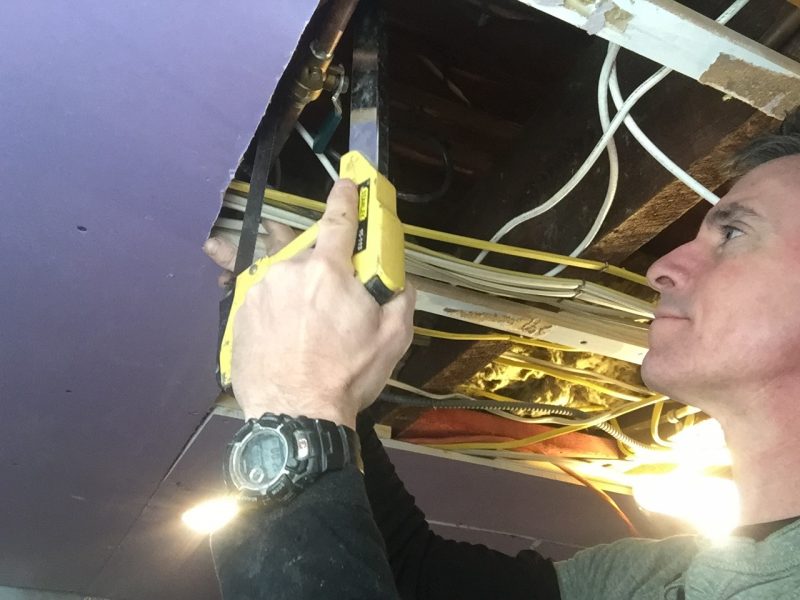
So, that’s a rats nest of stuff to work around: The breaker panel, condensate lines, sump ejection pipe, and about 10,000 wires stapled willy nilly above my head. And a ton of dust and insulation. I also needed a rotary hammer and long-as#-needed drill bit to go through my old house foundation.
Quick Note: I’m not trying to dissuade you from this. Nor am I trying to ‘inspire’ (ack!) you to take on something over your head. I hate that crap. No, I’m trying to share with you…you know…what happens in real life. I think you’ll be more likely to take on another torch project if doing this one isn’t a train wreck. Just sayin’, they don’t call me Captain Practical for nothing.
Tool-wise, beyond the typical stuff, I needed a rotary hammer both inside the house (to drill through block foundation) and outside the house (to set the faucet to the stucco). I also needed at least three bits along with my impact driver, masonry screws, and no shortage of patience. It was an Amerian Ninja-like maze just to get the drill into this joist bay.
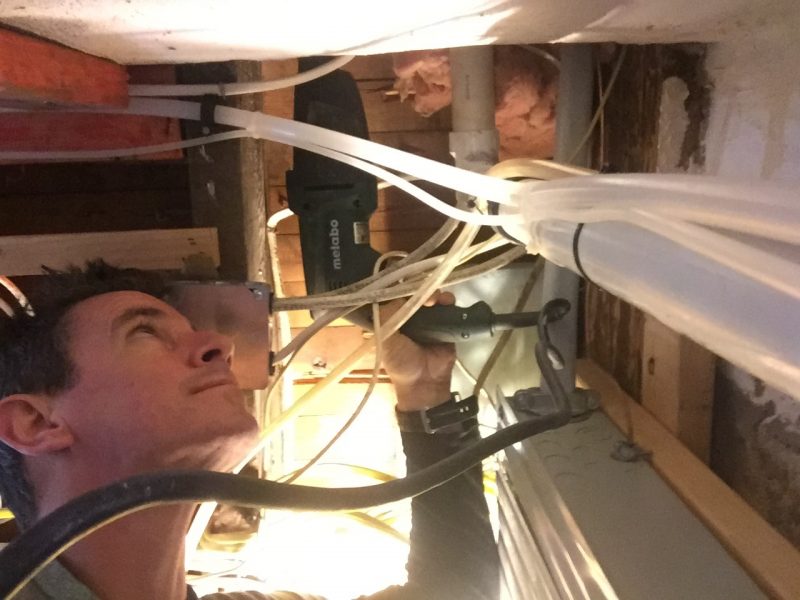
I used Bernzomatic propane and the TS4000 torch head. The TS4000 was ideal here. I got a lot of use out of the lock-on button so I could focus more on keeping the flame aimed where I wanted it instead of having to hold the trigger down. I also used both a wire brush and aluminum oxide sandpaper to clean any copper surfaces that would contact one another. I also love lever-handled shut-offs.
A few helpful soldering tips a plumber kindly shared with me. One was This Old House’s Rich Trethewey. The other, Rob the Plumber whom I met marveling at the the old school, small-town, last-of-its-kind hardware store we were shopping in at the time:
- Heat the fitting, not the joint
- Apply the solder from the opposite side you heat the fitting. Together, this has the effect of drawing the solder around the joint and making a neat, watertight seal.
- Wipe the solder down with a rag after application.
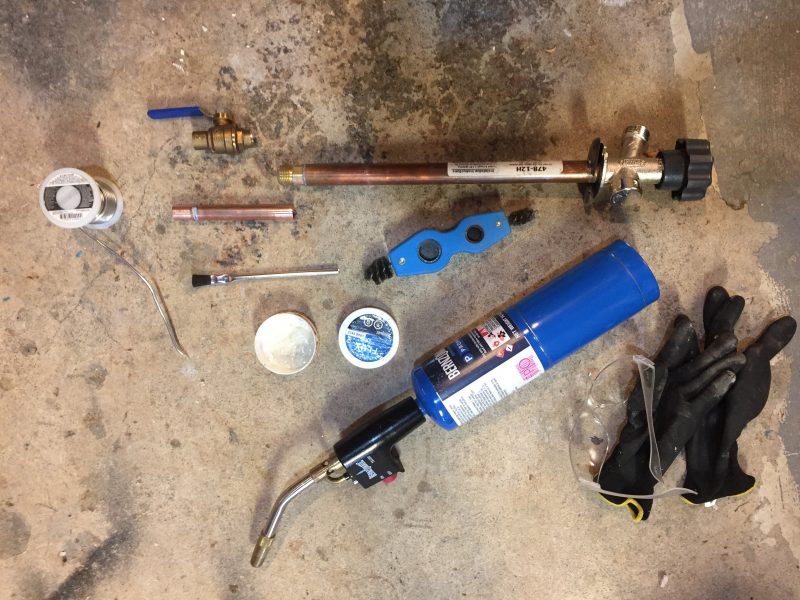
It’s easier to solder here on the floor than it is up in the ceiling, so I pre-assembled some parts. I also abandoned the threaded connection that the hose bib comes with and soldered a pipe inside the connection. And, just to be extra careful, I dry-fit all the pieces in the ceiling before soldering.
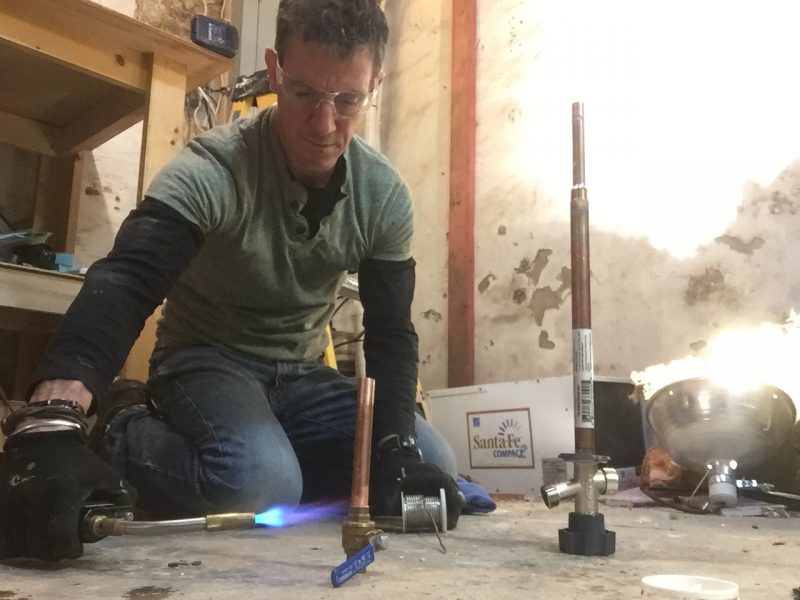
This job required a bit of running around—inside, outside, to the truck for tools, back inside, back outside…wait, what was I doing? Here, I’m setting some screws in the new hose bib. Just like building IKEA furniture, I didn’t tighten this all the way until everything was set inside.
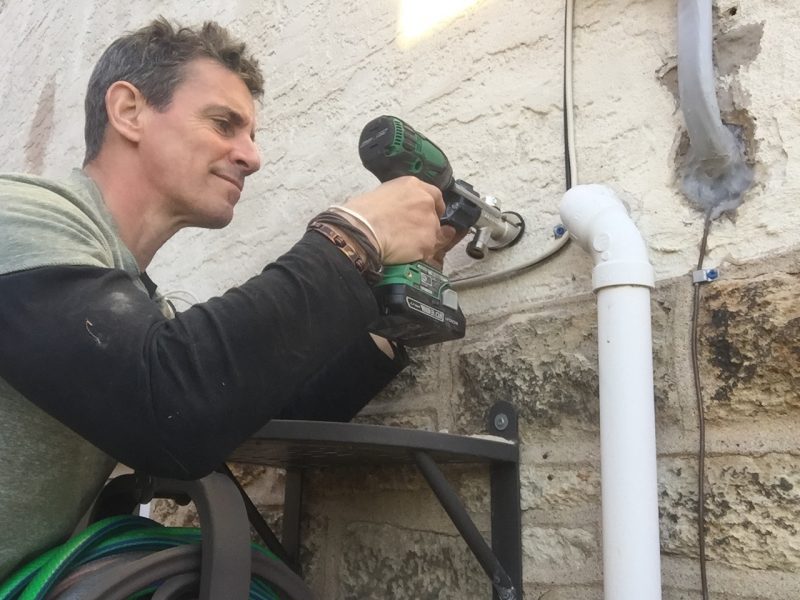
Using the solder-opposite-heat method, I got neat solders on my pre-assemblies—and no small shortage of comfort and joy! I could see a tight solder bead (joy) and knew it was water tight (comfort).
So why mess with a good thing? Up in the ceiling, I bent the solder so I could heat from below and apply solder from above with gravity working in my favor as well. A tuft of fire-proof Roxul insulation stands guard against burning a wire.
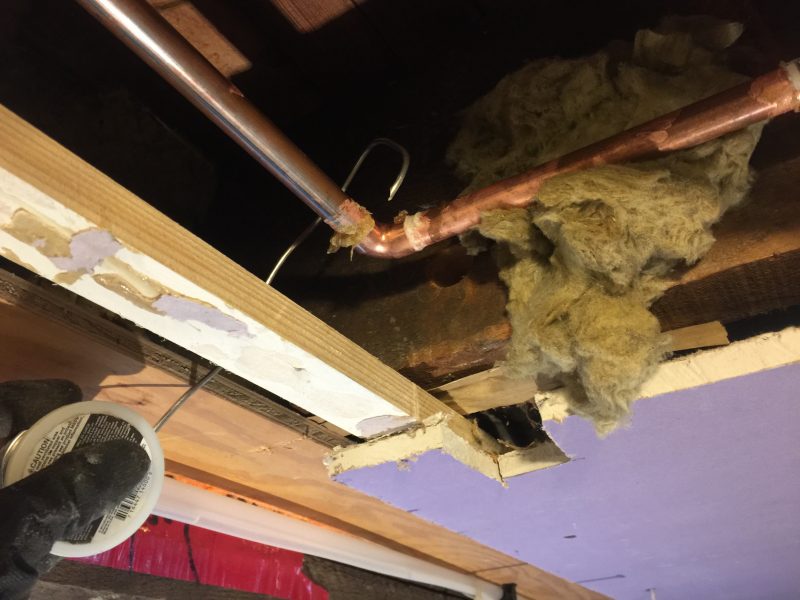
After the solders have cooled for a few minutes inside, set the screws holding the sillcock to the house. Last step—before cleaning up the million tools you just used—apply a bead of caulk to seal the hose bib to the house. Then turn your water back on and test everything out.
Oh, and in my case, DON’T put the tools away. Because in an old house, the ankle bone is connected to the…ALL THE OTHER #$%^&* BONES!!!!…I had to move the hose reel a few inches to the left to make room for the new faucet location.
OK, now I think I’m done.
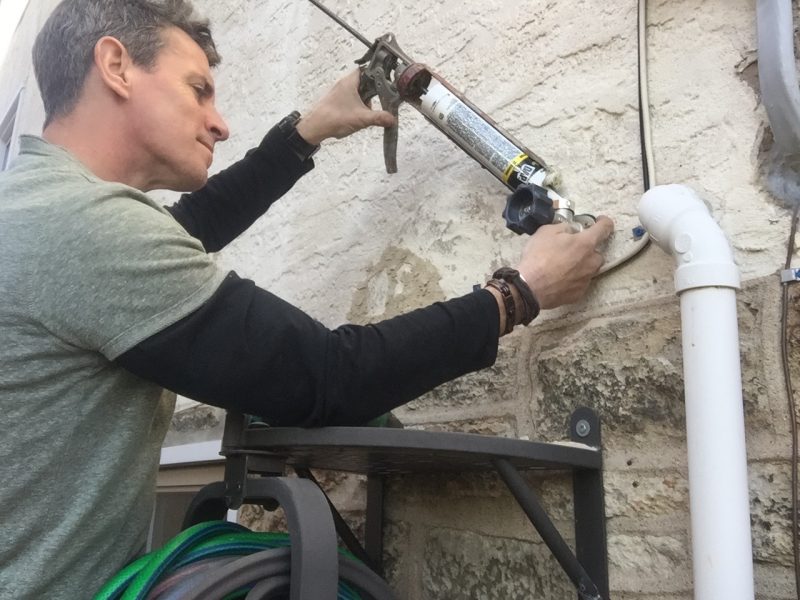

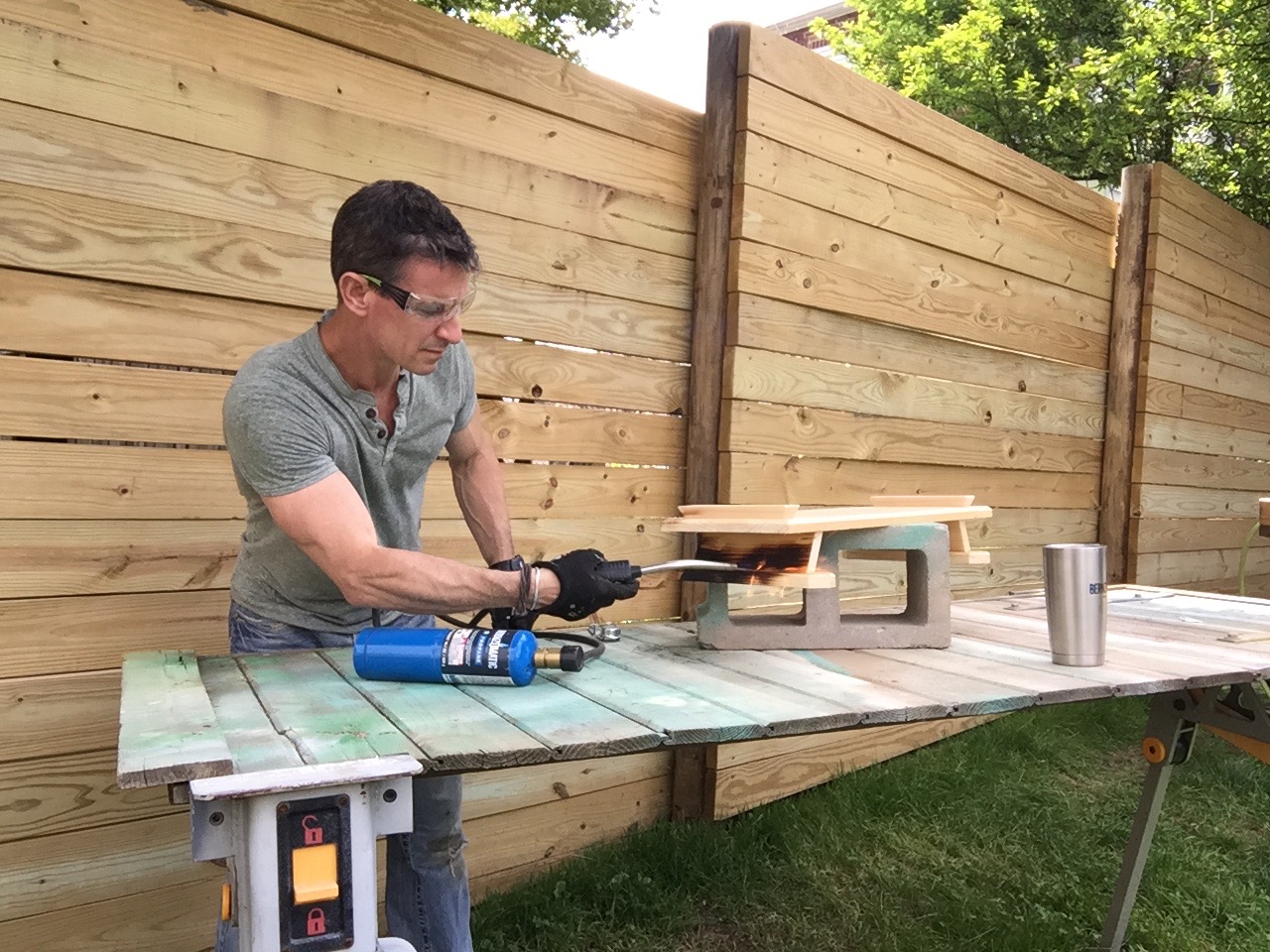

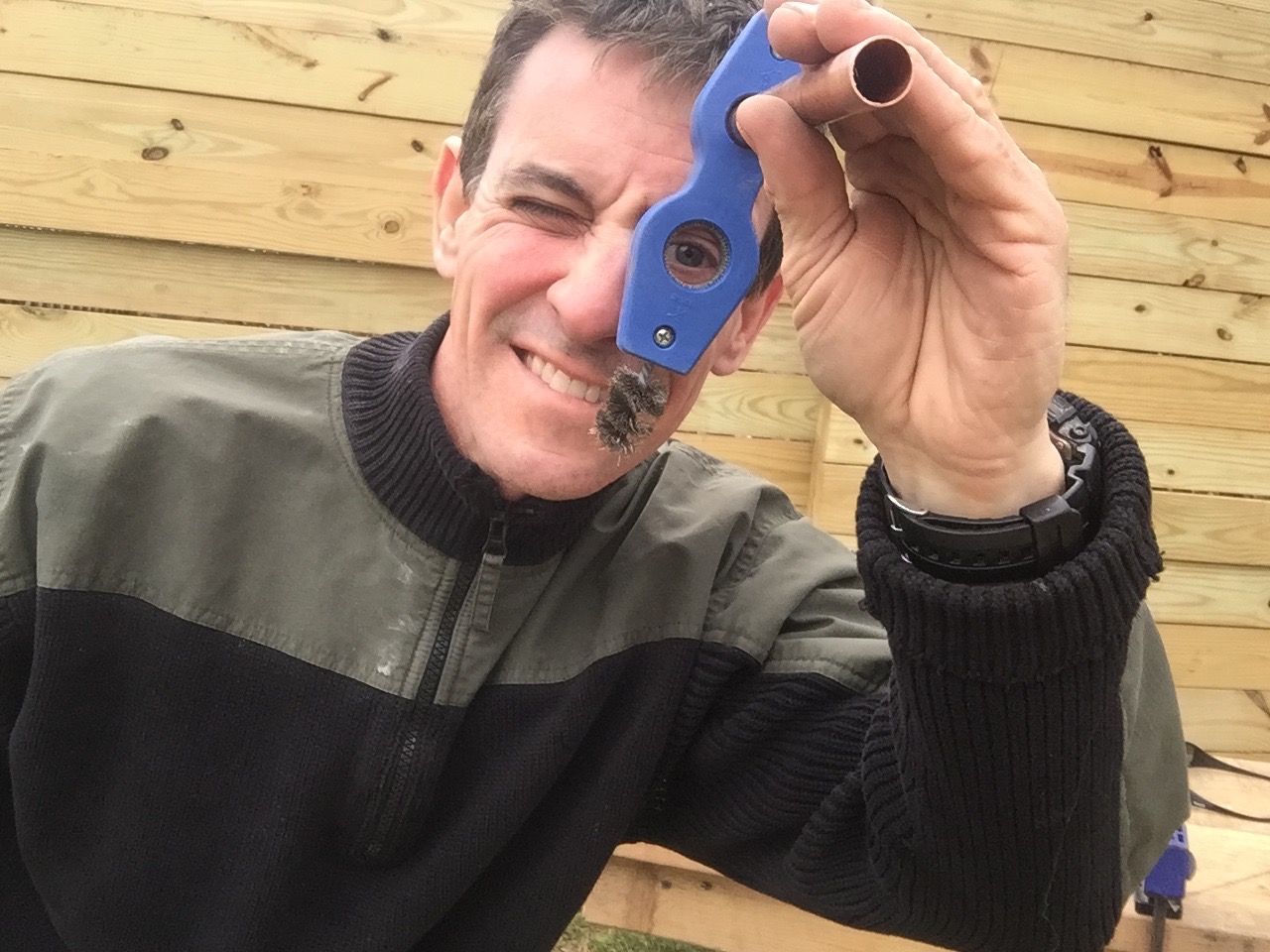

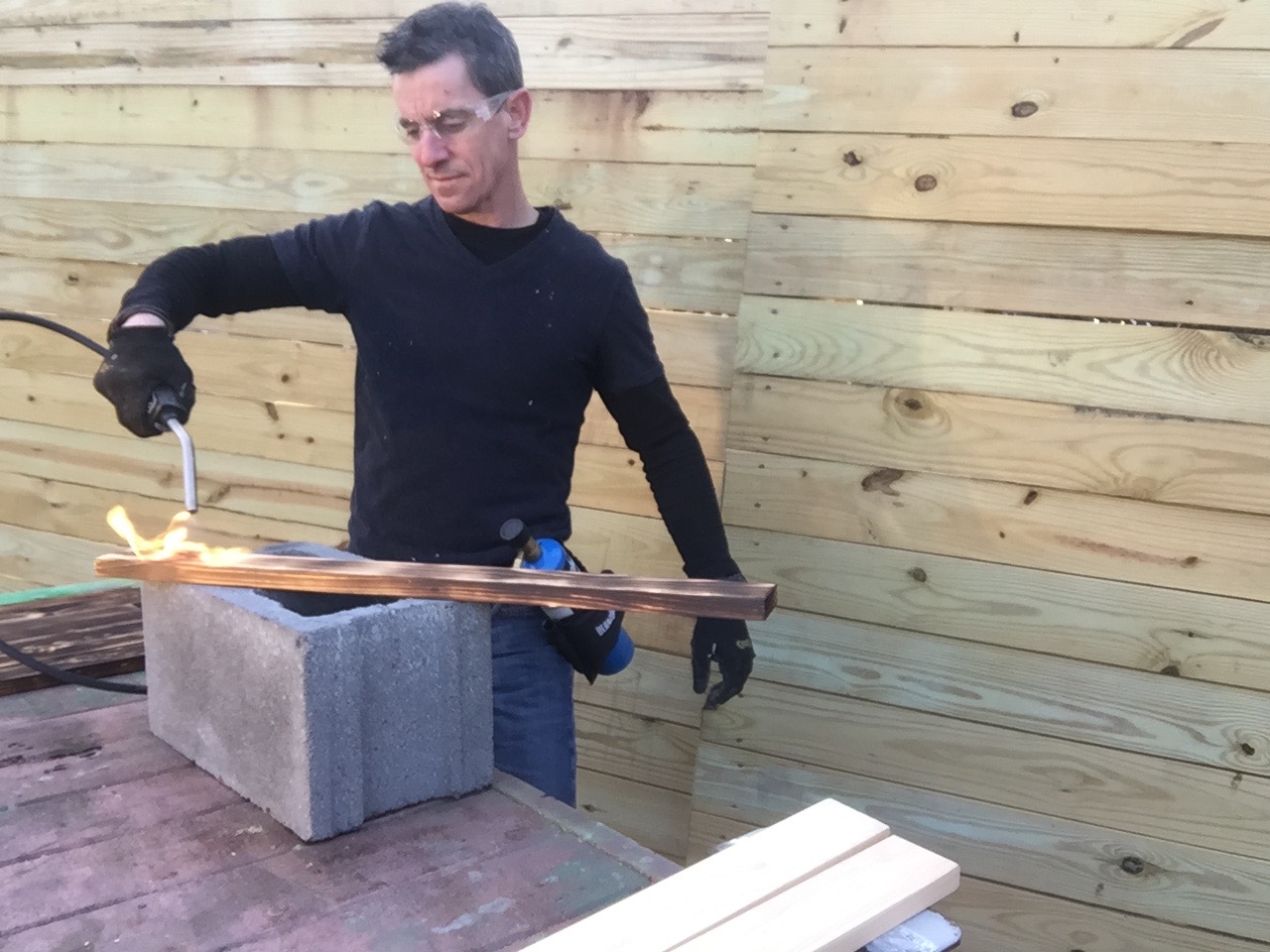

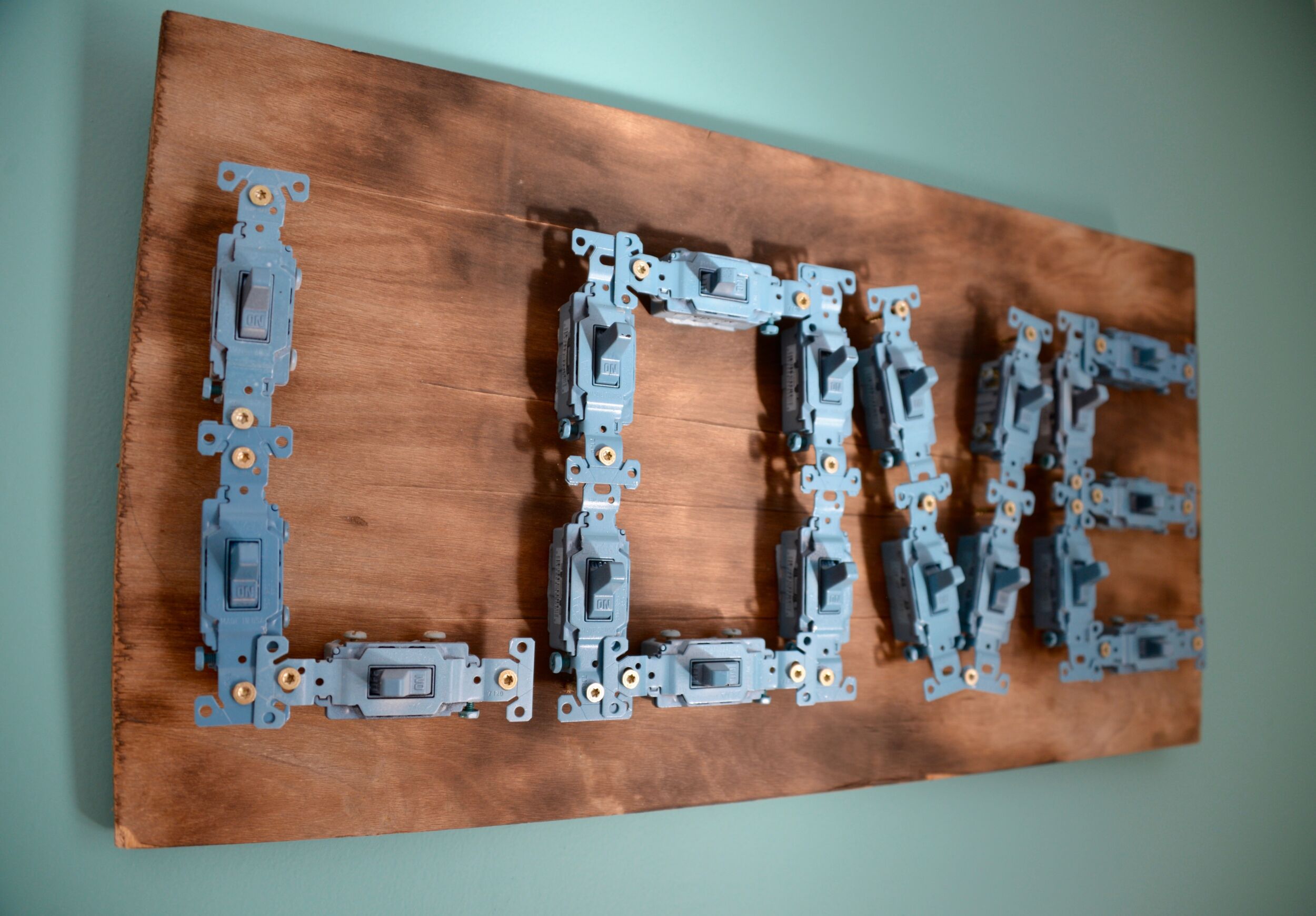
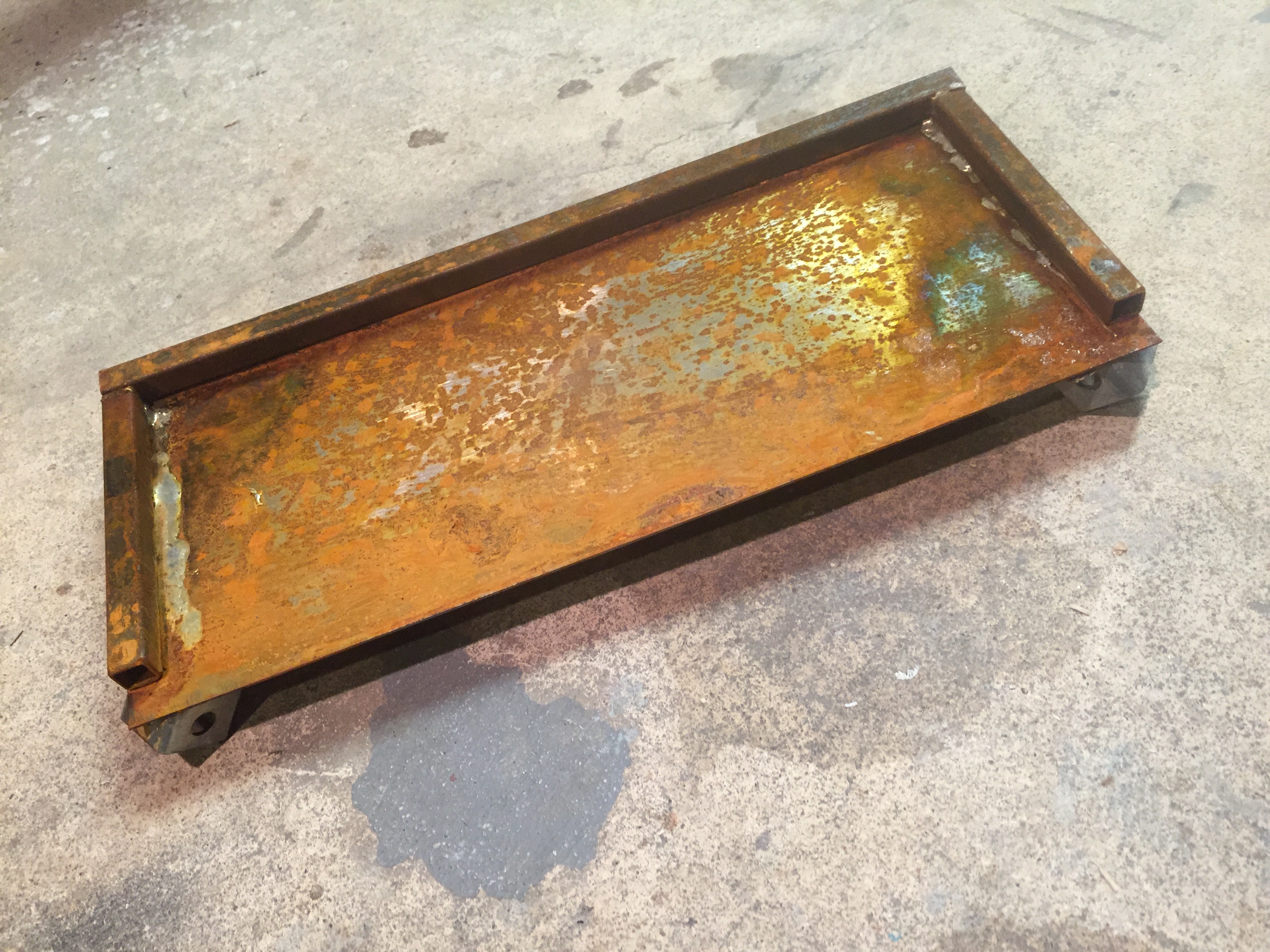
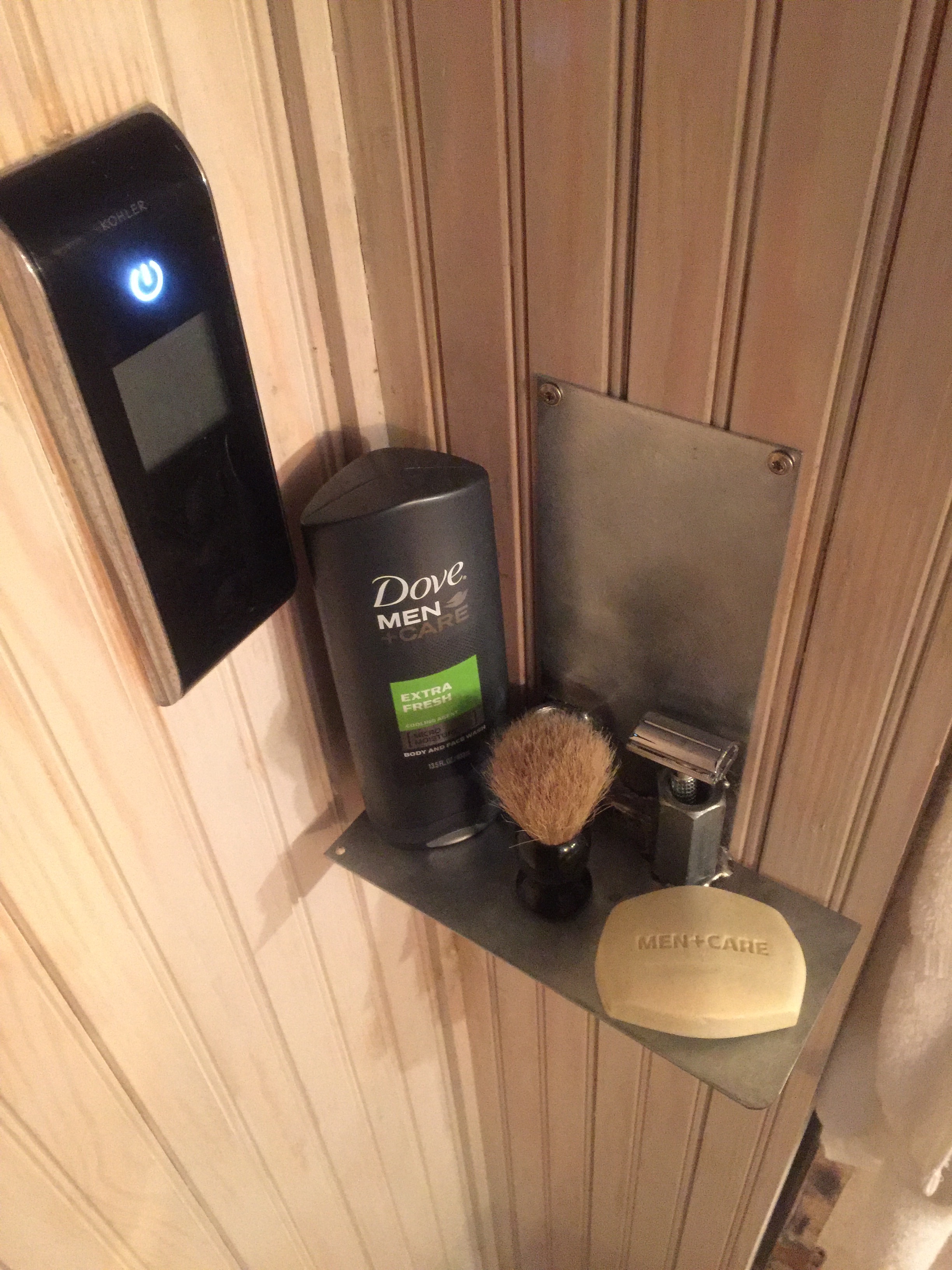
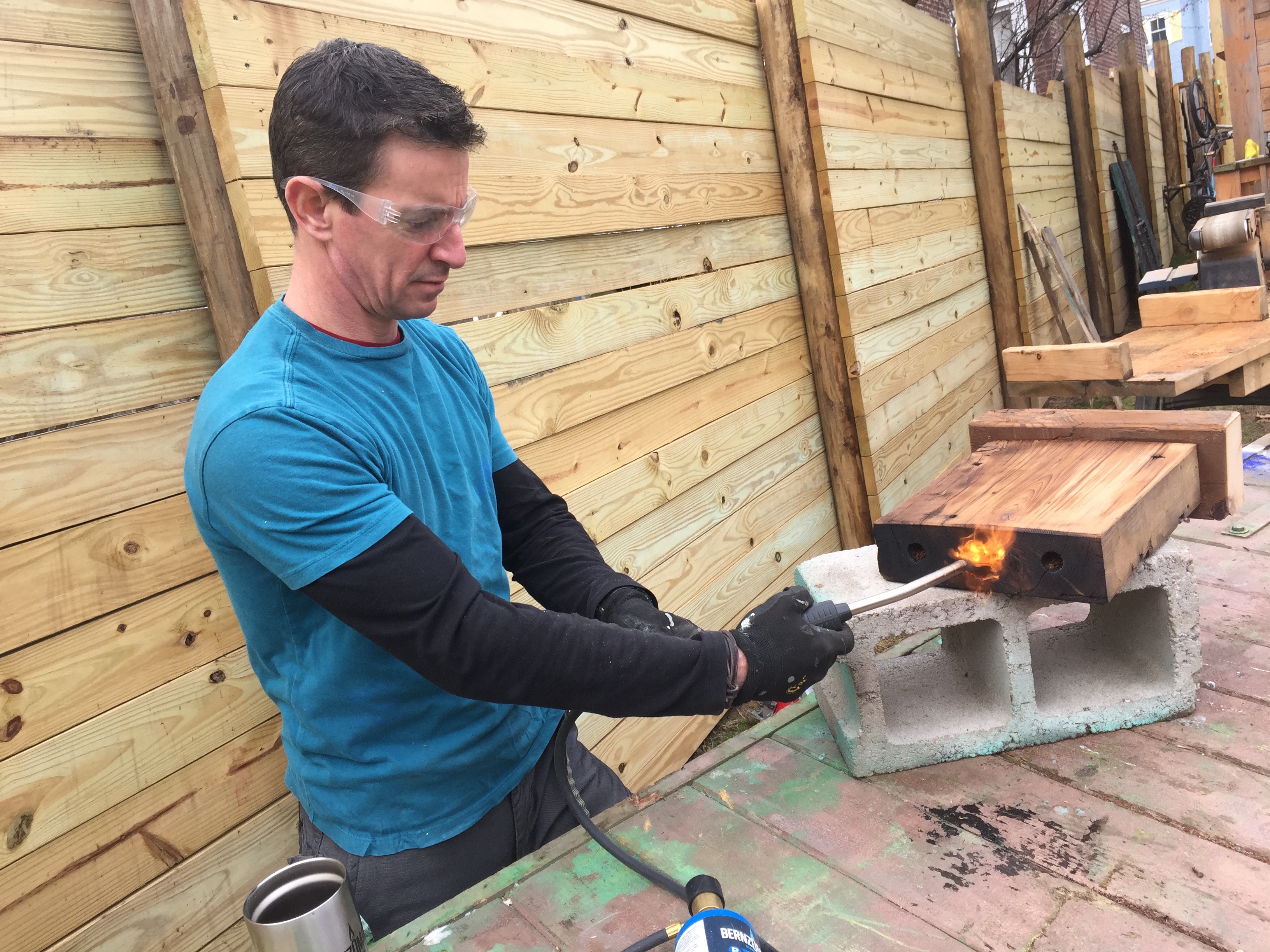
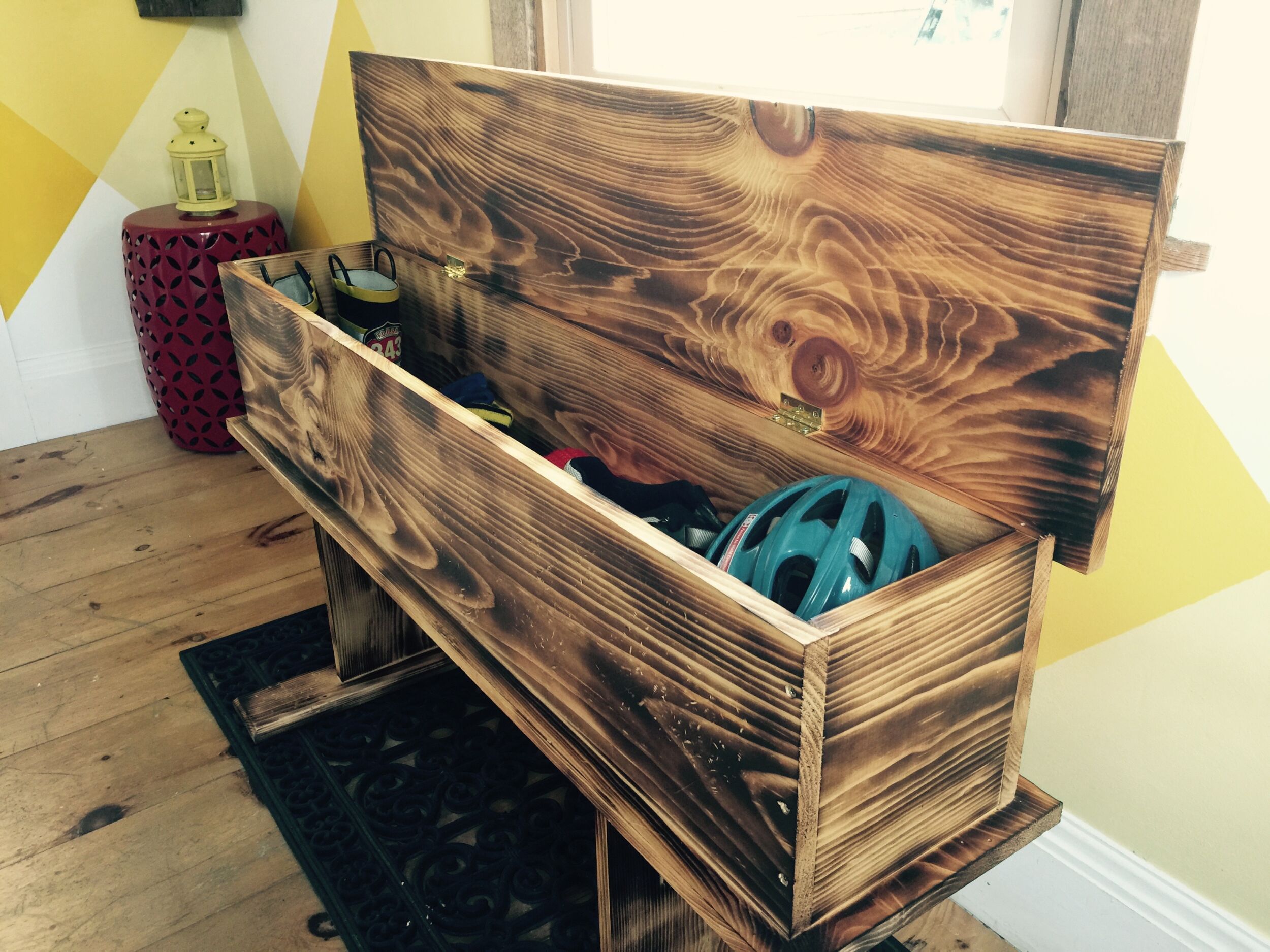
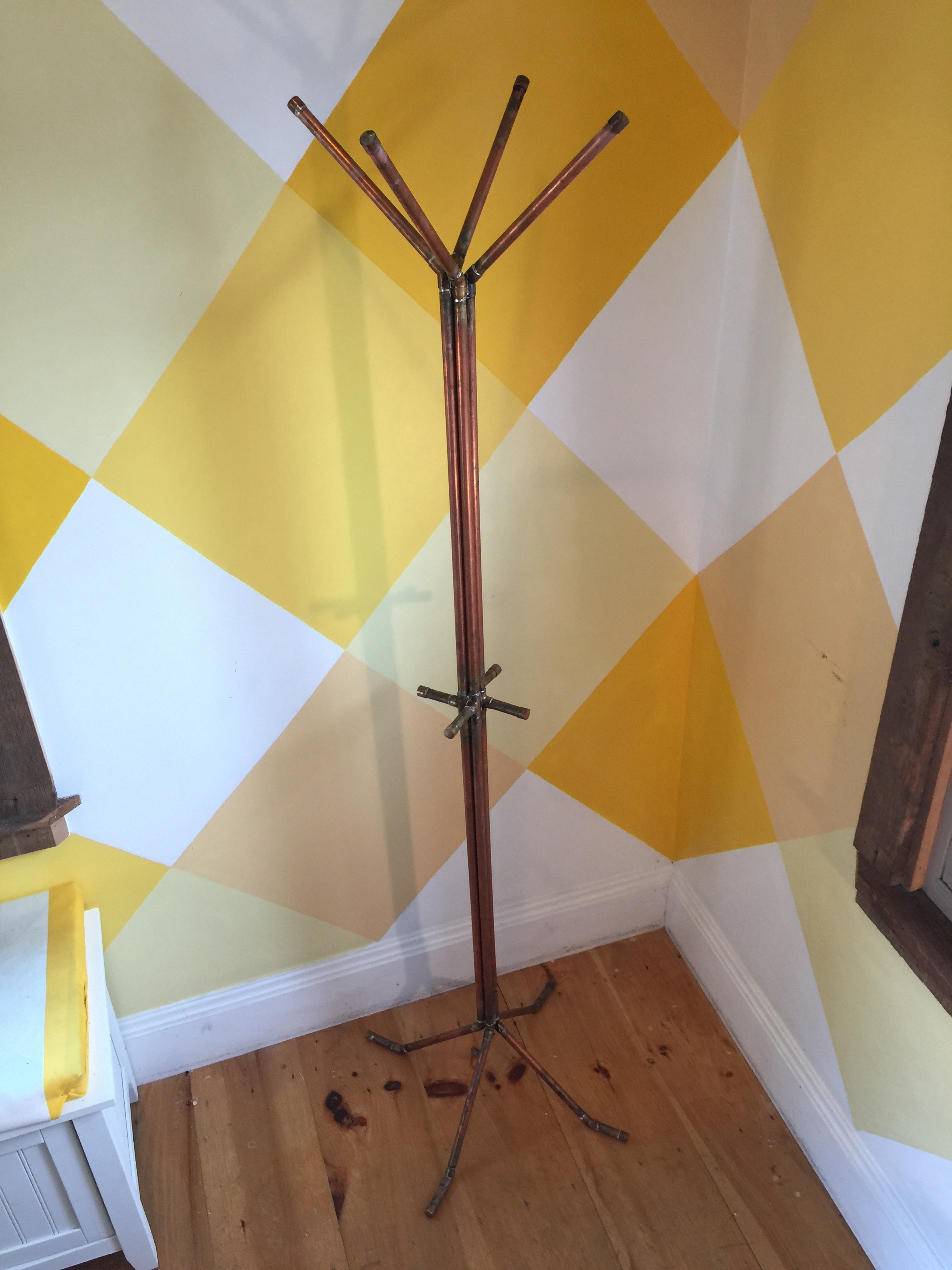
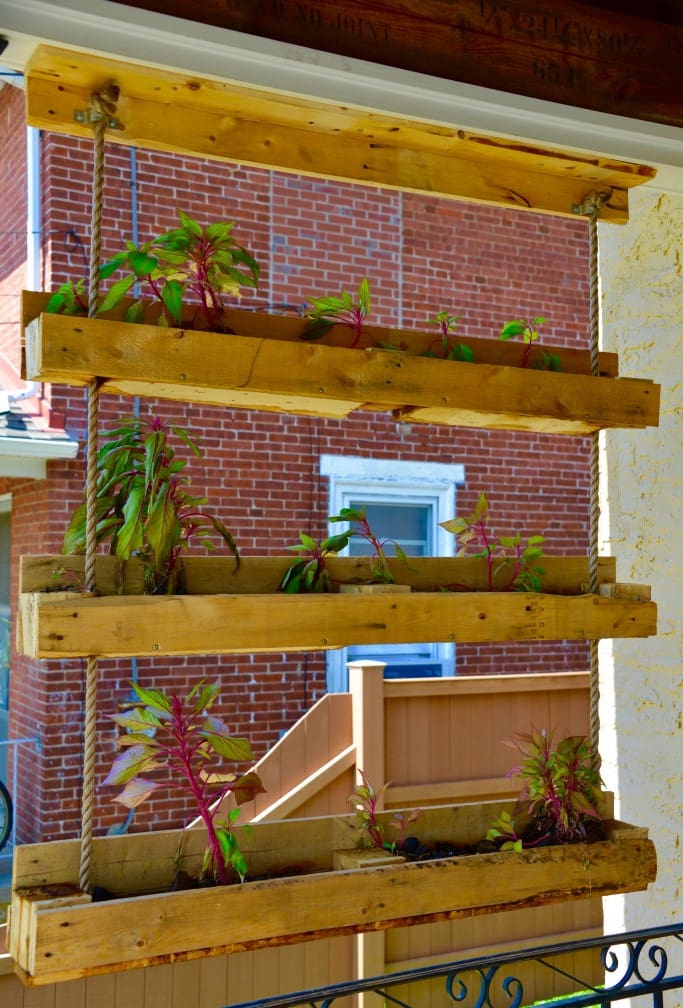
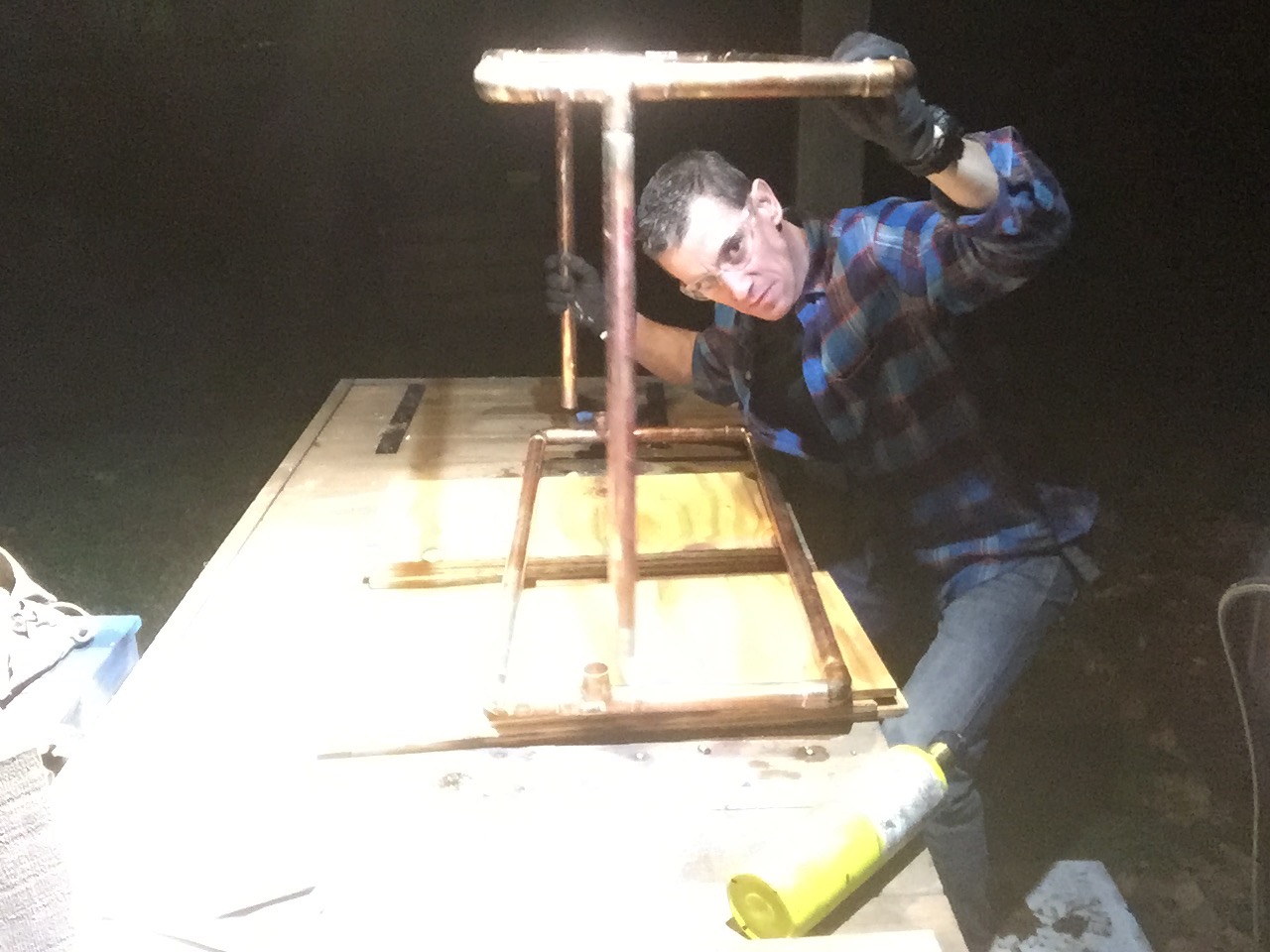
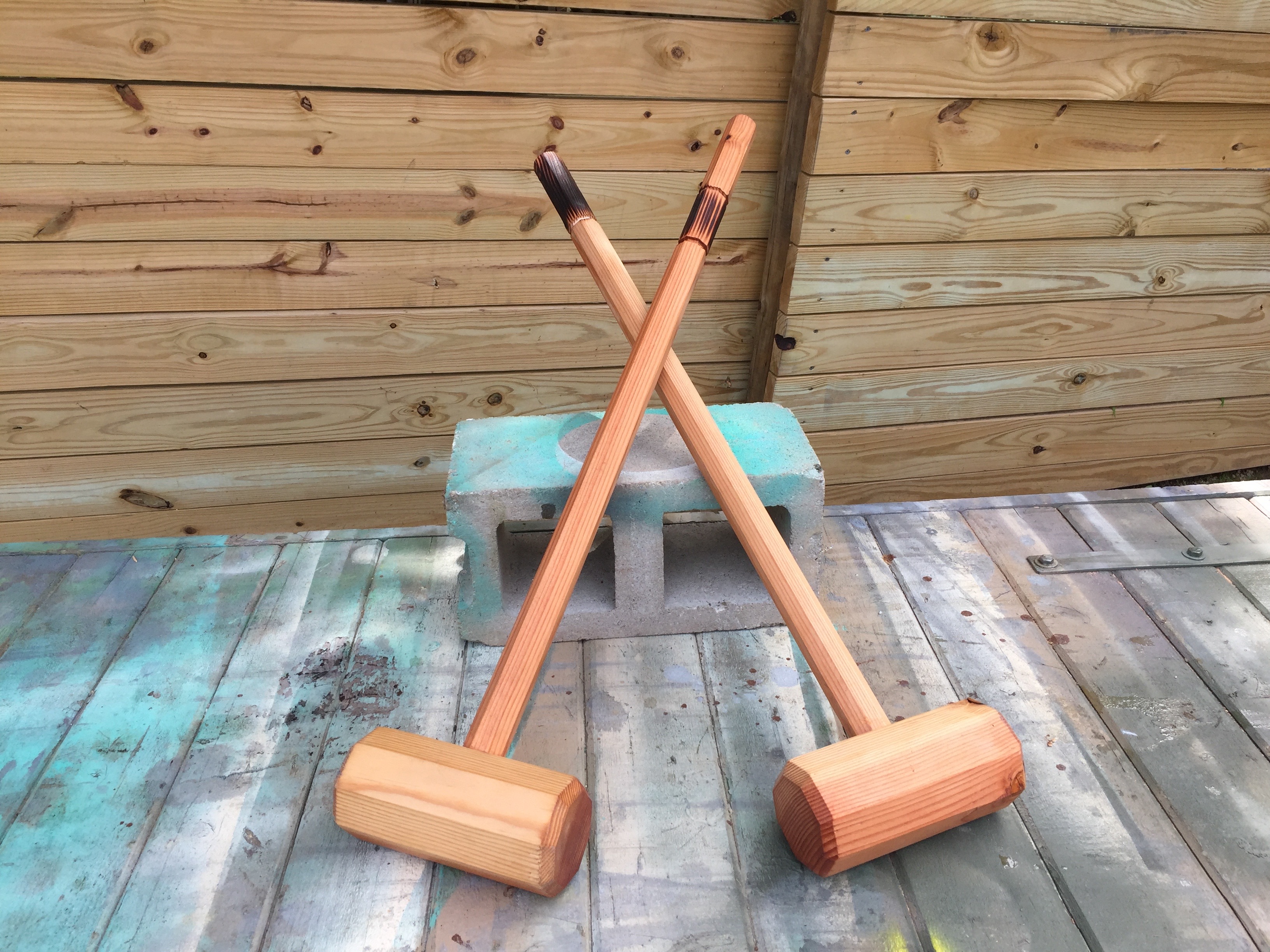

That’s how the good majority of “simple and quick” fixes seem to play out isn’t it? It’s always a perfectly easy task that gets stymied by the pea-wit to worked on it years before you. I especially like that shut off valve. I imagine you found a few buried electrical junction boxes too. Great job handling it Mark.
Thanks John. I should have opened the valve to let heat pass through it during soldering it turns out. Otherwise I’m happy with this one. Solders are nice and tight. How you doin’?
Thanks John! “Pea-wit”. Awesome!
Certainly a bigger job than what it seemed at first! Well done, and good article.
Thank you DIY Hubby (great name). In old houses, the ankle bone is always connected to the shoulder bone…or something…Good luck with your DIY. If you want to rock some videos, check out http://www.YouTube.com/MyFixitUpLife
Thanks DIY Hubby! Gotta keep the water flowing!